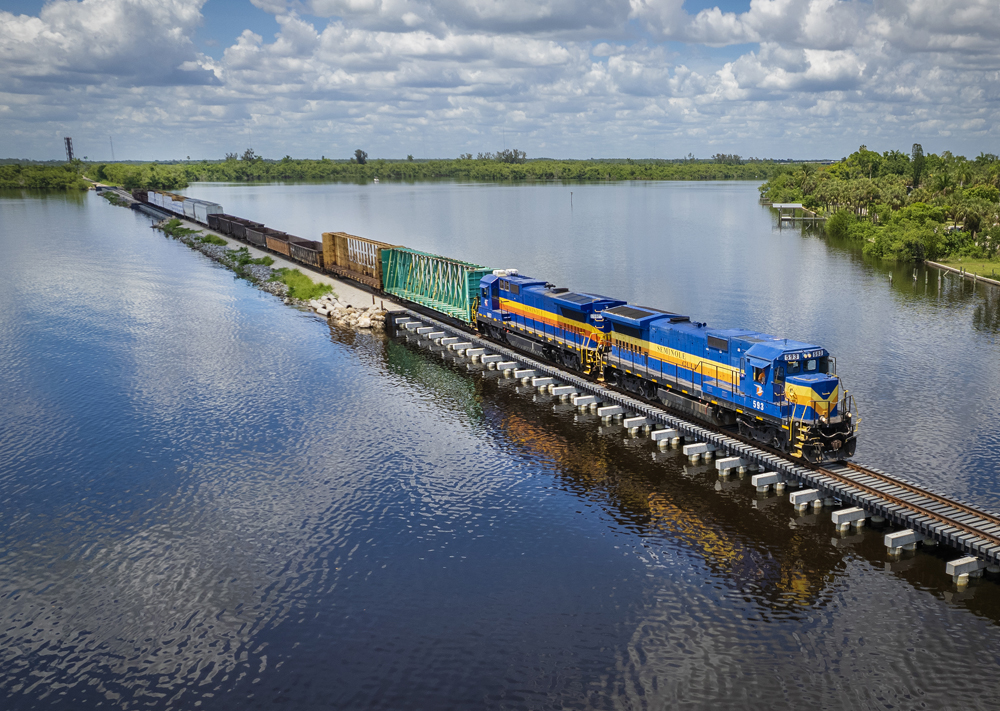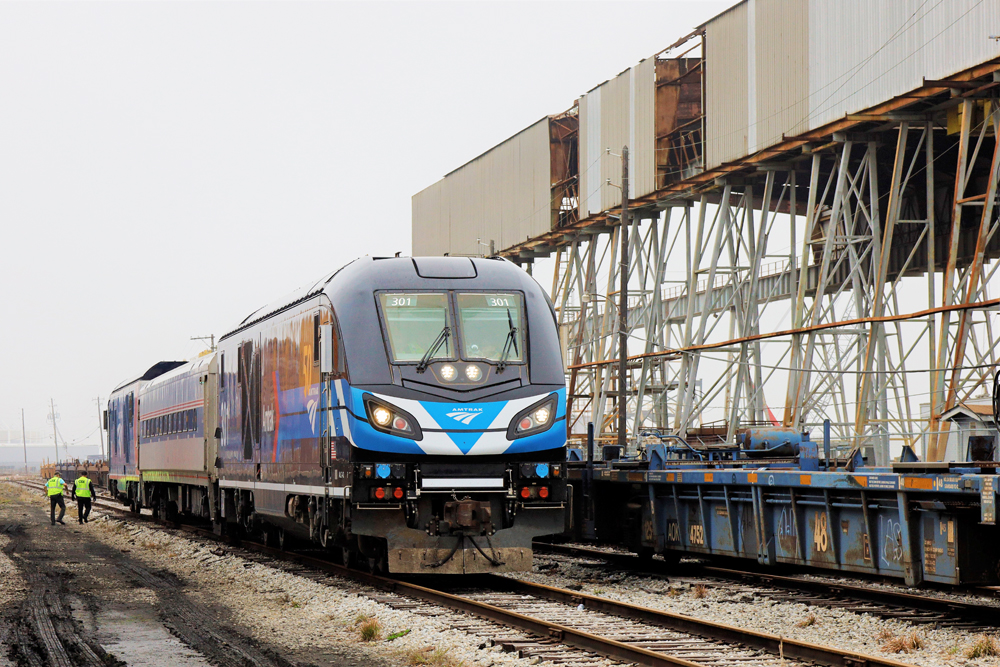
FORT MYERS, Fla. — It has been two years since Hurricane Ian devastated Southwest Florida as a Category 5 hurricane, but for rail shippers in far southwestern Florida, railcars only started moving again a few months ago.
Hurricane Ian made landfall in southwestern Florida on Sept. 28, 2022, with a record-setting storm surge, unprecedented inland flooding, and wind speeds greater than 150 mph. It was the world’s third costliest weather event on record and the deadliest hurricane to strike Florida since 1935. For Seminole Gulf Railway, the independent — and only — rail-service provider serving far southwestern Florida, Ian severed access to more than 30 railroad customers along the 80-mile Fort Myers line between Arcadia and Bonita Springs.
“You can’t plan that your whole railroad is going to get wiped out,” says Robert Fay, executive vice president of the railroad and son of Susan and Gordon Fay, who purchased the Seminole Gulf trackage from CSX in 1987.
Fay remembers the storm making landfall on the last days of September as a multi-day event with flooding occurring on Oct. 1 in Arcadia, near the railroad’s interchange with CSX.
Four bridges in Fort Myers were destroyed by storm surge and historic flooding, which included water as high as 15 feet more than 7 miles inland. In Arcadia, about 45 miles away, the railroad lost another three bridges due to torrential rains in central Florida, causing the Peace River to exceed its historical high by 4 feet.
“There were two very different aspects of the storm, one storm surge and one rain driven,” he says.
“We dispensed resources [before the hurricane] so we were not all jammed up, but in doing so, we got equipment abandoned,” explains Fay. “You can only predict so much.”
“The immediate reaction was that we have to contact customers and divert as much business as possible to Sarasota.”
The railroad operates a 12-mile line, dubbed its Sarasota Division, between Oneco and Sarasota, serving a handful of customers and its own transload terminal. This line interchanges with CSX at Oneco and is separate from the Fort Myers line, which serves the majority of the railroad’s customers and sustained the most damage from Ian.
“It was a long transload to ensure they got materials, and most of them did that, but not all commodities could bear the cost,” says Fay. “Some business was temporarily lost.”
Pushing most of its customers to Sarasota immediately after Hurricane Ian presented new challenges.
“We had to enhance Sarasota,” says Fay. “We had to build a new siding and rehab old sidings and make it capable of handling the traffic.”
No one would have expected that Fort Myers-area customers would go on to use this Sarasota alternative for almost two years as the railroad steadily worked on reopening the Fort Myers line from Arcadia south.
“It took us until mid-February [2023] to get the bridges in Arcadia opened, but that only opened 45 miles of the railroad,” he says.
Once new bridges were built in Arcadia, some traffic could go back to the Fort Myers line, but five months after the hurricane, more than half of the Fort Myers line was still severed from the rest of the rail network, including locomotives and railcars that were south of the out-of-service bridges.
“Then you had three complete bridge rebuilds and repairs to a fourth, and that is what took another year,” he says.
It took 18 months for the railroad to fully reopen, with Fort Myers service resuming earlier this year in February.
“Being diversified and transloading saved our bacon. One-line, one-customer, and we would’ve been done,” he emphasizes.
Lawmakers introduced House Bill 3782 in June 2023, about nine months after Ian, authorizing the federal government to provide emergency grants or enter into contracts and other agreements for short line railroad capital projects. That Bill is stuck on the House floor without a vote. According to Fay, there is still no program in place to quickly provide grants and other assistance to short line railroads so that they could expedite repairs. Instead, existing programs at the time required companies to apply for funds and wait for approvals before starting work.
“What may be available is a reimbursement and you cannot do anything until you get everything approved … It would have been at least another year for approvals,” he says.
The 5,000-carloads-per-year railroad estimates that had interest rates and inflation not been at 40-year-highs, repairs would have cost the railroad about $10 million, but macroeconomic issues inflated those costs to more than $18 million.
The Seminole Gulf paid for all of that work on its own.
“We had the rainy-day fund, and the rains came,” he says.













